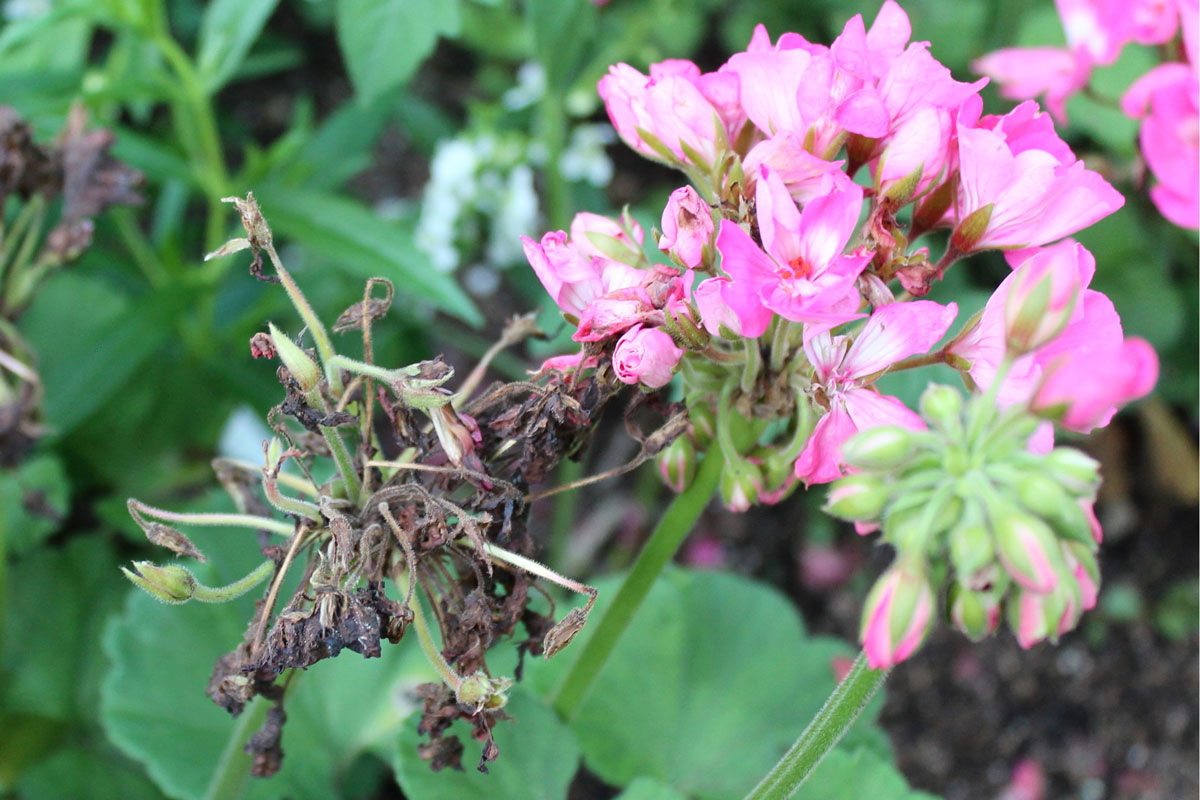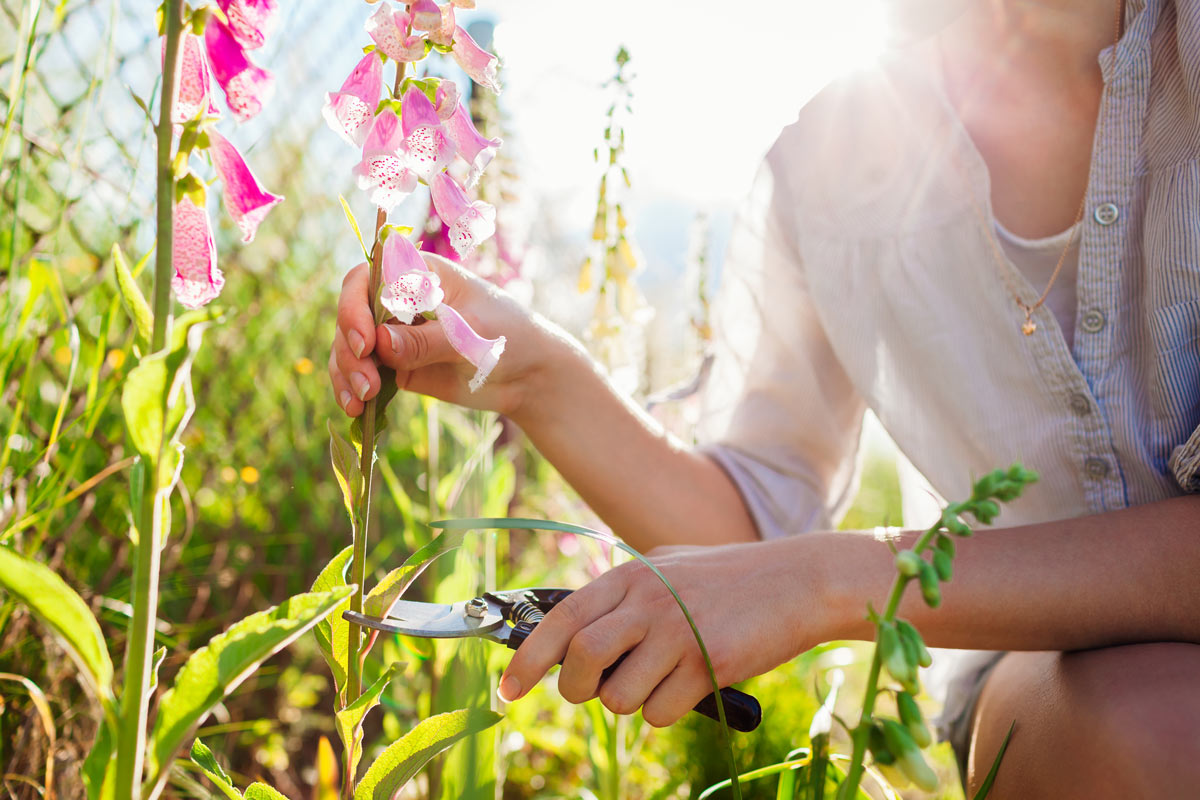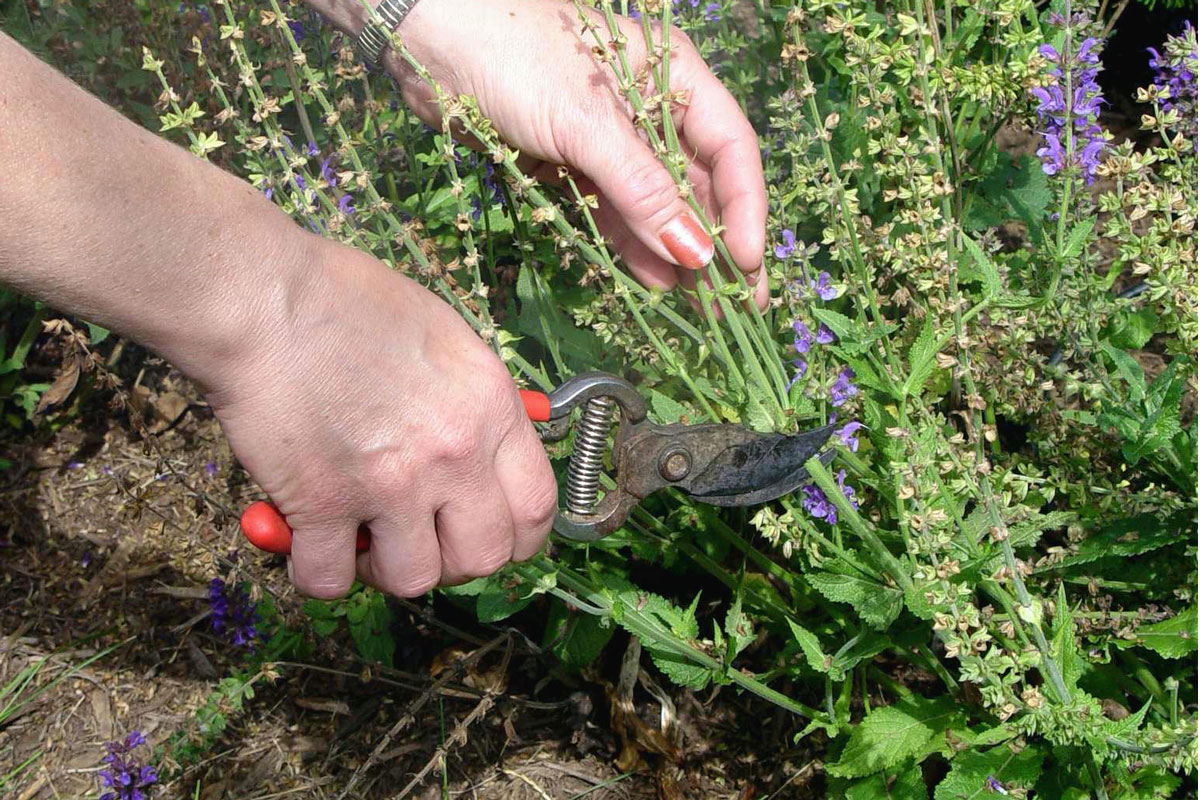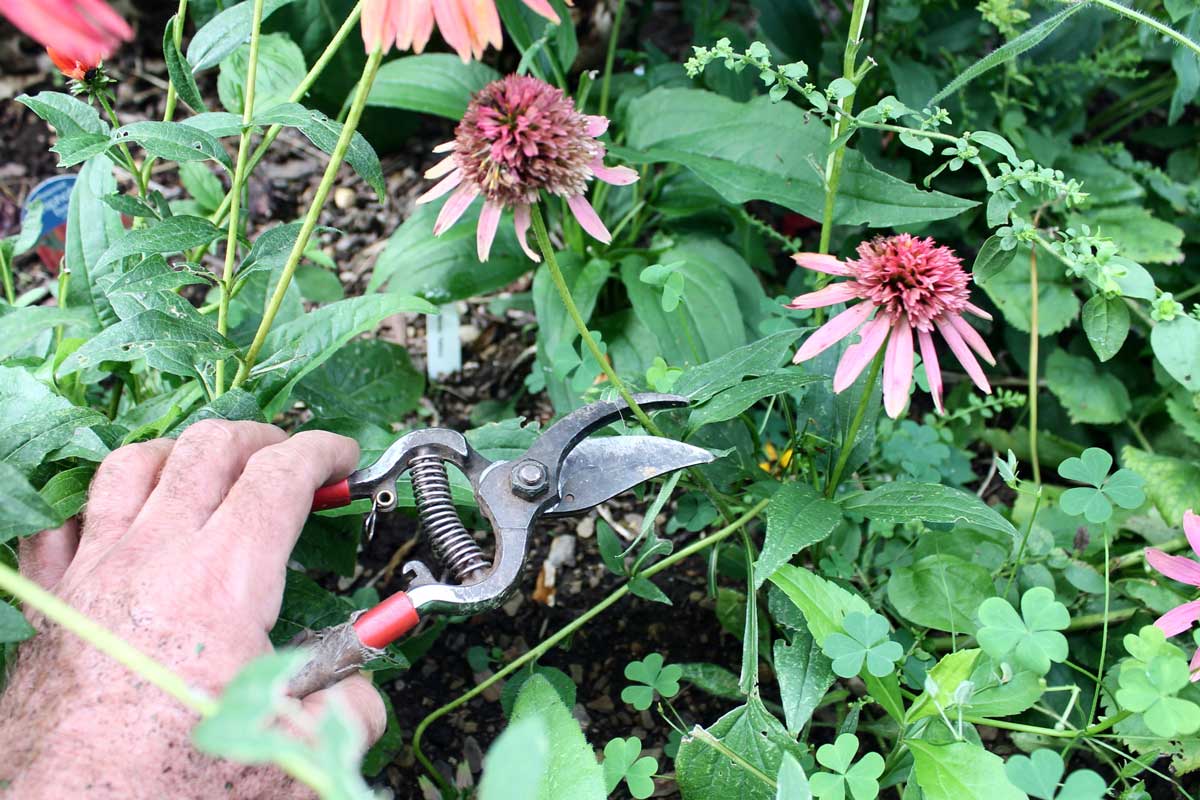Gardening Shortcuts Cut the Work
Here are some low-maintenance gardening tips so you have more time to enjoy your garden.
A common deed in the summer garden is “deadheading,” a form of plant-cutting that involves snipping or pinching off flowers after they’ve finished blooming.
This is primarily a neatening job to keep the garden looking good at a time when many flowers have peaked and are turning brown.
Deadheading can be done to both annual and perennial flowers as well as bloomed-out shrubs.
Some plants benefit more from it than others, and some are good “self-cleaners” that have the good sense to drop their spent flowers naturally. So this is one job that calls for case-by-case decisions.
Here are three main reasons to consider deadheading a flower:

For many flowers, such as this pink geranium, deadheading spent blooms encourages new flowers. George Weigel
After flowers fade, most plants focus on ripening seeds or fruits as a way to produce new plants for next year.
By snipping spent flowers before that happens, you’ll divert seed-ripening energy into root and leaf growth and sometimes into new flower production.
Most annual flowers (zinnias, marigolds, geraniums, heliotrope, etc.) are good about blooming anew after a deadheading.
Yarrow, bee balm, daylilies, salvia, coneflowers, black-eyed susans, and hardy geraniums are some of the best perennials at reblooming after deadheading. But even if you don’t get a new round of flowers, deadheading reserves energy for plant growth, not seed-maturing.

Most varieties of foxgloves are biennials or short-lived perennials. Leave some spikes in your garden to reseed for new plants next year. Maryviolet / iStock / Getty Images Plus
Dropping mature seed can be a good thing or bad thing, depending on your point of view and how freely each species reseeds.
For instance, you might want your milkweed plants to drop seed so you’ll have a free new colony of them next year. Deadheading right after the flowers fade would short-circuit that process.
Others that gardeners often want to reseed include larkspur, poppies, cardinal flowers, cosmos, coneflowers, melampodium, nicotiana, calendula, columbine, liatris, hollyhocks, lupine, foxglove, ageratum, and agastache.
On the other hand, you might not want a gazillion morning glory vines coming up next year underneath the one you planted this year. Deadheading the plant as soon as each flower fades stops or limits unwanted seeding.
Other plants that can seed beyond desire: nigella, rose-of-sharon, cleome, rose campion, bellflowers, evening primrose, forget-me-nots, butterfly bush, and johnny jump-ups.

Deadheading” is the process of removing flowers after they’ve bloomed to tidy the plant and encourage more blooms. George Weigel
Many flowers hang on to their brown petals for weeks, and some commit the further aesthetic sin of holding those browned-out flowers high above the foliage, giving a “dead look” to the summer garden.
Big flowers in particular (hydrangeas, hardy hibiscus, ligularia) can look like slimy brown blobs after a summer rain.
In a few cases, you might want to get rid of flowers even before they open. Coleus and lamb’s ears, for example, are grown for their foliage, and some gardeners consider the flower stalks to be a detriment.
Plants that don’t fall into any of the above groups don’t need to be deadheaded.
Good self-cleaners include vinca, impatiens, begonias, angelonia, bidens, lantana, portulaca and most new varieties of petunias.
Other flowers morph into seeds or fruits that you might want to encourage either for fall color or food for birds.
Examples of those include coneflowers, black-eyed susans, sedum, asters, sunflowers, goldenrod, rose hips, chokeberries, viburnums, hollies, elderberry, and shrub dogwoods.
And a third category of no-deadheaders are ones that you might actually like in their spent stage.
The tan globes of spent hydrangea flowers or the shooting-star look of spent alliums are examples of plants that look good well past their prime.
Strawflowers, statice, lavender, roses, baby’s breath, celosia, astilbe, and cornflowers are examples of flowers that dry well, hold their color, and give added mileage either in a cut bouquet or left on the plant.

Entire flower stalks should be removed for plants such as coneflowers that bloom atop individual stalks. George Weigel
To deadhead a flower, the tool of choice is usually pruners or garden scissors.
In most cases, snip the stem below the spent flower to just above the first set of healthy leaves.
Don’t just pull off the brown petals. If your goal is to encourage repeat bloom or to prevent unwanted seedling, you need to remove whole flowering structure.
In the case of flowers that produce separate stalks for the flowers – daylilies and hostas, for example – go ahead and cut the whole way down to the base of each spent stalk. Those won’t reflower.
Some plants produce a mass of flower clusters that brown all at once, such as coreopsis, candytuft, lavender, calamint, salvia, and catmint. These can be sheared back in one fell swoop instead of snipping them stem by stem. Just check to be sure the plants don’t already have new buds waiting in the wings before you whack them.
Clipped flower heads and stems can be added to the compost pile, where they’ll decay into an excellent soil amendment.
The exception is plants that you don’t want to come back from seed. If you toss deadheaded flowers on the compost pile that already have matured their seeds, it’s possible they’ll survive to send up new shoots wherever you spread the compost.
After deadheading is a good time to water the plants (especially during a hot spell in summer) and to apply a dose of fertilizer (to fuel new growth and a possible rebloom).